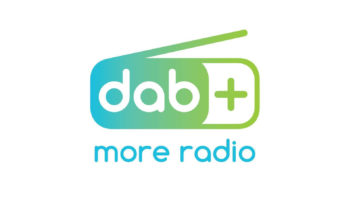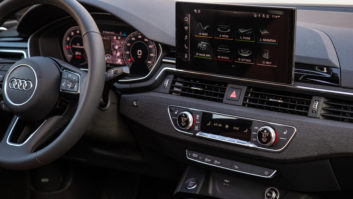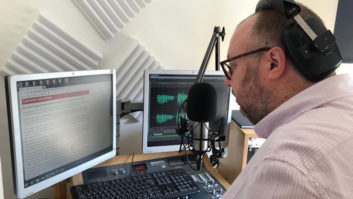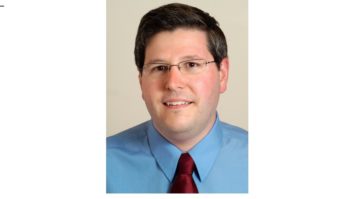The author is president of WorldDAB.
LONDON — DAB digital radio continues to go from strength to strength, with over 59 million receivers sold, more than 2,000 regular DAB services on-air across 38 countries, and new trials starting in Asia, Europe and the Middle East.
The reasons for choosing DAB are clear. It is an open digital radio standard that has been adopted internationally; and listeners, regulators and public and commercial broadcasters have embraced its benefits.

WorldDAB President Patrick Hannon says DAB opens prospects for radio broadcasters.
Photo Credit: WorldDAB
INNOVATION
For consumers, DAB offers new services and improved sound quality. For policy makers and regulators, it secures the future of radio. This is important not just for cultural and democratic reasons but the fact it’s free-to-air, with no gate-keepers, and a medium that can be relied upon in emergencies.
For broadcasters, DAB provides an opportunity to innovate and build new audiences — launching new services, building brands and reaching audiences that simply would not have been possible on capacity-constrained FM.
Broadcasters’ fears about the threat of increased competition appear misplaced. Evidence from the United Kingdom, where commercial market leaders Global and Bauer have both increased market share over the last 10 years (though organic growth and acquisitions), demonstrates that incumbents have significant advantages over potential competitors.
The key to success in DAB is to take a proactive, innovative approach, and the biggest threat is to ignore the opportunities of DAB — leaving the door open to more agile competitors and new entrants.
European Union governments are now working together to accelerate rollout of DAB in Europe, building cross-border links to develop a European consensus about radio’s digital future. Norway has commenced the digital switchover (DSO) process, which will complete at the end of 2017, and Switzerland will implement its own DSO between 2020 and 2024.
The next wave of markets are close behind: the U.K. is soon expected to hit 50 percent digital listening, and Germany just announced the winners for its second commercial multiplex.
RECEIVER ADVANCES
In France, new cities will see DAB+ coverage this year, Italy has been running a significant marketing campaign on the back of expanded coverage and the Dutch launch of DAB+ in 2013 has been the most successful yet, with high sales of digital receivers. In Asia Pacific, Australia leads the way with 3.6 million DAB+ listeners, Indonesia launched trial DAB+ services in Jakarta in April 2016 and Thailand plans to start digital radio trials in the next year.
Digital Switchover Gains Ground
On Jan. 11, Norway made history as the first country to start the digital switchover process from FM to DAB+, with all national stations making the move by the end of this year.

In Norway, public broadcaster NRK covers 99.7 percent of the population with DAB, while commercial radio covers 92.8 percent.
Photo Credit: Digital Radio Norway
Listeners in Norway are able to access over 30 national stations on DAB+, compared to just five on FM. The first reports on listening and receiver sales have been positive and in line with expectations. Over 1 million cars in Norway have DAB radio and 73 percent of Norwegian listeners tune into digital radio every day as of June 2017. Local broadcasters will continue on FM at least until licenses are due for renewal.
Switzerland is the next country to switch off FM services, starting DSO in 2020 and completing by 2024 at the latest. The north Italian region of South Tyrol is also starting its FM switch-off in 2017. In the United Kingdom, the government will review the next steps for digital radio when its criteria for coverage and listening criteria are met — expected to be achieved by the end of 2017 or early 2018. Other countries are taking the lessons from Norway and starting their own discussions about potential DSO scenarios.
A commitment to digital switchover has significant benefits for broadcasters, manufacturers and listeners. It provides certainty on the future and allows broadcasters and radio manufacturers to plan and invest accordingly.
The prices of DAB receivers continue to fall, with devices available from just €14 and those with a color screen have dropped below €50 (about US$56). All major car manufacturers are fitting DAB in their vehicles; in Norway 98 percent, the U.K. 87 percent and Switzerland 66 percent of new cars come with DAB/DAB+ as standard. The range of adaptors to convert cars already on the road continues to grow, as more and more drivers are converting their cars to DAB.
The European Broadcast Union has called for the adoption of digital broadcast radio across Europe, and in May the German Ministry of Economics and Energy (BMWI) announced that the Federal Cabinet has proposed an amendment to the Telecommunications Act, which would require future high-quality radio receivers to be capable of receiving standardized digital signals. At the time of writing this act has already passed its first reading.
Broadcasters and industry are engaging with the EU about measures to encourage the development of digital radio across Europe — for example, by proposing regulation that new radio receivers (consumer and automotive) should be capable of receiving FM and digital services. This would ensure that citizens across the EU are able to buy future-ready radios wherever they live.
This year we’re seeing trials in several new markets in Eastern Europe, the Middle East and Asia Pacific. With WorldDAB members sharing their experiences of deployments and how to establish legal and regulatory frameworks, there is a clear path to success that countries planning digital radio rollout can learn and benefit from.
To find out more on DAB deployments around the world and the latest developments, visit the WorldDAB website (www.worlddab.org).







